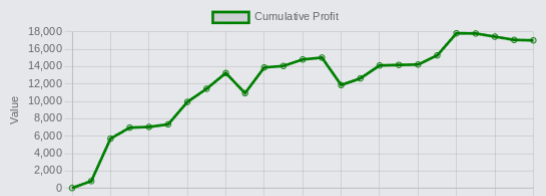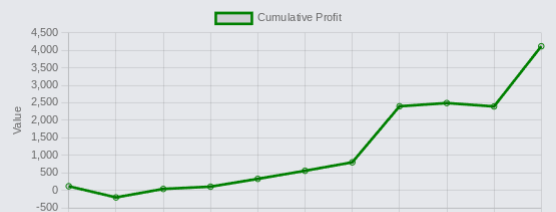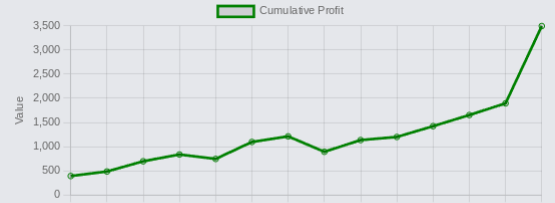Log in or register to download unlimited Forex robots!
Latest Commodities Report: Gold Recovery At Risk As Dust Settles From Disappointing NFPs:
NZ Dollar Extends Rise Against Majors
The New Zealand dollar continued its early rise against the other major currencies in early European deals on Monday, as investor sentiment improved after Chinese exports rose more-than-forecast in October and U.S. jobs data indicating a sustained improvement in labor market.
The Labor Department report on Friday showed that U.S. jobless fell to a new six-year low of 5.8 percent in October.
The non-farm payroll employment rose by 214,000 jobs in October, showing an addition of 200,000 jobs or more for nine straight months.
Data from the General Administration of Customs showed that China's trade surplus increased to US$45.4 billion from US$31.0 billion in the previous month. Exports rose 11.6 percent on year, beating forecasts for 10 percent rise.
European stocks are trading higher, as investors watched corporate results.
The kiwi advanced to 1.5967 against the euro, its strongest since October 31. On the upside, 1.59 is seen as the next resistance level for the kiwi. At last week's close, the pair was worth 1.6051.
The kiwi, which closed Friday's trading at 0.7751 against the greenback, hit a 5-day high of 0.7799. The next possible resistance for the kiwi-greenback pair lies around the 0.79 area.
The kiwi strengthened to a 5-day high of 89.15 versus the yen, compared to 88.81 hit at Friday's close. If the kiwi-yen pair continues its rise, it may challenge resistance around the 90.00 zone.
The NZ currency spiked up to 1.1093 against the aussie, its highest since November 5. This is up by 0.3 percent from Friday's closing value of 1.1128. The kiwi is poised to find resistance around the 1.10 mark.
Draghi Summons Banking Know-How for ECB Posts as Role Shifts
Mario Draghi is seeking economists who understand banks, and he’s not afraid to look outside Frankfurt to find them.
As the European Central Bank assumes the mantle of euro-area financial supervisor, its president has just staffed two key monetary-policy posts with non-ECB experts on how lenders function in the economy. The appointments mark a trend of turning to outsiders as the 16-year-old institution struggles to meet its changing responsibilities with existing staff.
“People like Draghi have much more interest in how markets and supervision affect monetary policy than the old school,” said Anatoli Annenkov, senior European economist at Societe Generale SA in London. “It’s a reflection of the problems that the ECB is facing.”
Sergio Nicoletti Altimari, 51, a Bank of Italy financial-markets official who worked closely with Draghi during the latter’s time as governor there, will become director general for macroprudential policy and financial stability from Jan. 1.
Luc Laeven, a Belgian economist at the International Monetary Fund with a track record of analyzing financial crises, will become director general for research by March.
The appointments were confirmed by the ECB’s Governing Council last week. Both men declined to comment.
Risk Monitoring
Draghi is seeking people who can handle the new powers the ECB gained when it became the euro-area banking supervisor on Nov. 4. About 900 new staff have been hired so far who will be dedicated to oversight, and the role also brings the authority to promote financial stability throughout the economy with measures such as higher capital buffers or increased risk-weightings on lenders’ assets.
This macroprudential policy was born out of the gradual recognition that the financial system isn’t always rational, and so someone needs to be watching for the emergence of risks that could escalate and broaden.
ECB Vice President Vitor Constancio said in Chicago on Nov. 7 that the post-crisis work to repair Europe’s banking system is not yet done. He said the use of macroprudential tools to ensure financial stability is needed more in Europe than in the U.S., and shadow-banking oversight still needs to be addressed.
Nicoletti Altimari previously worked at the ECB from 1998 to 2006, when he rose to deputy head of monetary-policy strategy. From 2006 to 2008 he was an economic adviser to Italian Economy Minister Tommaso Padoa-Schioppa, a former ECB Executive Board member and an early advocate of pan-European banking supervision.
In his new job, replacing another Bank of Italy veteran, Ignazio Angeloni, who has joined the board of the Single Supervisory Mechanism, he’ll oversee the ECB’s activities in devising and implementing macroprudential tools.
Policy Conflict
He’ll have to work in close co-operation with national authorities, who retain most of the power in this field, and he’ll have to strike a balance between the ECB’s traditional monetary-policy remit and the new supervisory role. While the two arms will generally operate independently, the enactment of macroprudential measures will need closer coordination, as he has previously noted.
“There are complementarities between monetary and macroprudential policies, but also potential conflict,” Nicoletti Altimari wrote in a 2012 Bank of Italy research paper. “Monetary policy needs to take financial stability into account.”
Laeven is currently lead economist at the IMF’s research department in Washington, and teaches finance at Tilburg University in the Netherlands. He started his career as an analyst at ABN Amro Bank NV and has published extensively on the link between monetary policy and bank behavior.
He’ll oversee an ECB division that produced more than 110 research papers this year alone. The position has been vacant since the appointment of Frank Smets as Draghi’s counselor in November 2013.
New Brains
“Traditional bank regulation, which focuses on individual bank risk, may be insufficient for large banks,” Laeven wrote in an IMF discussion paper in May. “Additional regulation, based on systemic risk considerations, is needed to deal with the externalities of distress of large banks.”
The economics of how the banking sector as a whole affects monetary policy is still being worked out at the ECB and the European Systemic Risk Board, the Frankfurt-based panel that watches for imbalances building up in the economy.
That’s reflected both in abstract policy and in the need for new brains to figure it out, according to Francesco Papadia, chairman of Prime Collateralised Securities and a former director general of the ECB’s market operations.
“It’s not totally clear yet how the ECB will organize the relationship between financial stability, bank supervision and the ESRB,” Papadia said “There’s of course a very strong trend to bring new people from outside.”
European markets weaker, Bunds stronger – DB
FXStreet (Barcelona) - The Deutsche Bank Research Team comments on the European economy weakening in-spite of an increase in private consumption.
Key Quotes
“Closer to home, European markets weakened into the close following the US data with the Stoxx 600 -0.5% lower on Friday. Before this, Germany reported a fairly subdued industrial production print, +1.4% mom which was well under the 2.0% mom consensus.”
“Our European economists noted on Friday that while industrial production fell 0.3% qoq, this was a much smaller drag than the Q2 print although the further deterioration in confidence data does suggest that the underlying economy is weak, despite the robust expansion of private consumption. As a result the team have lowered their GDP forecast (due this week) for Q3 to 0.1% (from 0.4%).”
“Bunds were modestly stronger following the print, 1bp lower to 0.82%. Looking around the rest of the Eurozone, France (0.0% mom versus -0.2% mom expected) and Spain (1.0% versus 0.7% expected) reported firmer industrial production prints.”
EUR/USD could bounce from 1.2577 resistance; USD/JPY could slip to 112.50-113.10 before bouncing – Elliott Wave Analysis
The worse than expected NFP figures sent the USD down across the board, while metals turned up on Friday. The most of USD pairs are at some important levels based on the wave structure and that could be bearish for the buck in the weeks ahead. If you will check the daily charts you will see that the five wave decline on EURUSD and the five wave rise on USD Index are now in their final stages. However, those are forecasts for a longer period, so here we will focus on intraday charts where there is room for another leg up on the USD.
On EURUSD we can see a nice rally from the low, which is quite strong but it may belong to a larger and complex pattern. We are looking at wave (c) that can be part of a flat correction in wave 4. In that case, the pair can turn down from 1.2577.
USDJPY is also trading south, but only with three waves for now that we see it as wave 4. We are tracking wave (c) now that can make an extensions even to the 112.50-113.10 area where former swings can turn into a support. We will look up for a wave 5 rally if we will get an impulse bounce from area of a support.
Statement helps stabilise USD/RUB for now - BTMU
FXStreet (Barcelona) - Derek Halpenny, European Head of Global Market Research notes that the USD/RUB suffered extreme volatility on Friday, initially rising to an intra-day high of 48.629 before then falling to an intra-day low of 45.673, a high-to-low swing of 6.1%.
Key Quotes
"The rebound of the rouble was triggered by the rumours of central bank action but in the end the only action was a statement released warning that the Bank of Russia was “prepared to increase FX interventions at any moment, as well as to use other financial market instruments available”.”
“They describe the move as being fuelled by “feverish demand” suggesting a belief that speculative selling may now be reinforcing the fundamental reasons for rouble weakness – the falling price of oil and limited access to capital markets.”
“Certainly crude oil prices in the second half of last week has rebounded modestly while the introduction of dollar liquidity supplying operations by the Bank of Russia has helped ease the premium paid for switching from roubles to dollars.
“Still, the Russian authorities in the statement reiterated its plan to move to a full free float and the rouble is likely to undergo renewed selling pressure in the days ahead until Friday’s words threatening intervention actually turn to action. Intervention may then have a greater chance of success if speculative positioning reaches an extreme.”
Gold weakens ahead of the US opening
FXStreet (Mumbai) - Gold prices are trading weak after failing to capitalize on the gains witnessed during the Asian session as the US indices futures trade flat with equities at record highs.
Gold declined to USD 1165.50/Oz, down 0.37% for the day after having hit a high of USD 1777.40/Oz levels earlier todays. So far, the metal has been unable to extend the sharp bounce witnessed on Friday post the release of the weaker-than-expected US Non-farm payrolls data. Meanwhile, the S&P futures and the DJIA futures are trading 0.17% and 0.14% higher respectively. Gold is unable to sustain gains despite the US dollar index weakening 0.27% today.
The yellow metal also came under pressure after the official data in China showed price pressures remained flat in October. China’s consumer price index was 1.6% higher from a year earlier in October, unchanged from the previous month and in line with analysts’ expectations. Fall in inflation in the world’s second largest economy is likely to reduce the hedge demand for Gold.
Elsewhere, the yellow metal or XAU/EUR trades 1.17% lower at EUR 934.79/Oz levels. Moreover, the yellow metal is down in EUR terms as the single currency gained strength against the US Dollar post Friday’s jobs data.
Gold (EUR) Technical levels
Gold has an immediate support at 929.5, under which the prices can fall to 925.62. On the flip side, the metal may re-test 945, if the immediate resistance at 939.40 is breached.
USD Corrective Mood Prevails – TD Securities
FXStreet (Barcelona) - The FX Research Team at TD Securities see USD retaining a corrective feel after Friday’s price action saw the dollar slip back on what was only a mildly disappointing non-farm payroll report.
Key Quotes
“We think the overhang of long USD positions—Friday’s CFTC data showed a new record, aggregate long position of more than USD45 bn versus the major currencies has been built up by speculative accounts—is weighing on the USD’s progress. “
“In the absence of any major data releases—new information for the markets—until the latter part of the week, the USD may range with a modest downside bias.”
“We think the overall trend remains higher however, and EURUSD gains are unlikely to extend much beyond the 1.26 area.”
GLOBAL MARKETS-China deal sends shares to 1-month high, ruble surges
* Long-awaited HK-Shanghai connection boosts Chinese shares
* Ruble up 2 pct after central bank scraps formal intervention
By David Gaffen
NEW YORK, Nov 10 (Reuters) - World equity markets hit their highest level in more than a month on Monday, lifted by a deal to give global investors easier access to China's $3.9 trillion stock market and more gains in U.S. equities.
Wall Street ended higher, with the S&P 500 rising 0.3 percent to 2,038.26, a closing record, while the Dow industrials gained 0.2 percent to a new closing high of 17,613.74.
The CBOE Volatility Index, or VIX, Wall Street's favored index of anxiety, hit its lowest level since mid-September.
MSCI's All-World index, which spans 45 countries, rose 0.4 percent to hit its highest level since late September. European shares were up 0.7 percent.
"Interest rates are still low, oil prices are low and everything looks conducive to more strength between now and the end of the year," said John Kosar, director of research with Asbury Research in Chicago.
Chinese shares jumped 2.5 percent and Hong Kong's Hang Seng index climbed almost 1 percent overnight after officials announced a Nov. 17 start date for a long-awaited tie-up that will allow global investors to buy Chinese stocks from Hong Kong. Shares in those markets were the strongest among major world markets.
In Russia, tough talk from President Vladimir Putin and a move by the central bank to abandon rules-based currency intervention sent the ruble soaring after a recent run of weakness.
The dollar index added to recent gains, reversing early losses, and was up 0.2 percent as investors continue to favor the U.S. currency over the lower-yielding units of Japan and the euro zone. The dollar index, which measures the dollar against a basket of six major currencies, rose to 87.82 and is up 12 percent since May.
There was no sign that recent volatility in Russia's ruble was about to let up. After dabbling with the idea last week, Russia's central bank formally abolished structured currency market interventions.
After a dramatic fall in the previous week and volatile swings of 6 percent on Friday, the ruble was last up almost 1.7 percent at 45.89 to the dollar.
U.S. Treasuries sold off modestly, with the 10-year yield rising to 2.36 percent on a 17/32 point decline in the price of the benchmark.
Oil prices initially rose on renewed political tensions in the Middle East and Ukraine. But they subsequently gave up their gains, with Brent crude off 1.5 percent at $82.70, and U.S. light crude off 1.7 percent at $77.63. (Additional reporting by Hideyuki Sano in Tokyo; Editing by Hugh Lawson and Dan Grebler)
Australia – ANZ Roy Morgan weekly Consumer Sentiment for the week ended November 9: 114.8 (prior was 114.6)
NZ Roy Morgan weekly Consumer Sentiment for the week ended November 9, 114.8
prior was 114.6
Up a tiny 0.2% on the week.
Up almost 3% over the last three weeks
4-week average rose to 113.9, up 13% from the lows earlier in 2014
ANZ’s chief economist Warren Hogan:
“While it is encouraging that consumer confidence is now trending higher, the pace of improvement is slightly disappointing. Confidence in the economic outlook remains subdued (despite the rise last week) and is likely contributing to the unusual sensitivity of households to negative economic newsflow. This has caused three sizeable drops in confidence this year in response to job losses in the aviation and manufacturing industries, Federal budget cuts and a surge in the unemployment rate (later revised). A gradual improvement in the non-mining economy over coming quarters should help to build stronger and more sustainable momentum in confidence into 2015.”
By using the MT4talk website, you automatically agree to the Forum Rules & Terms of Use, as well as the terms below.
Everything you see on the MT4talk website is created by its users, mainly the members of the MT4talk forum, as well as the forum administrators.
What is MT4talk?
MT4talk is an online Forex forum with over 5000 Forex robots and over 3000 Forex indicators uploaded by forum members in the last 10 years, available to download from forum posts. The uploaded files do not come with support or any guarantee.
The website does not sell Forex robots and does not provide support for any downloaded Forex robots. MT4talk offers a PRO membership, allowing you to download unlimited files from forum posts. If you choose to download a Forex robot from the forum, you do so at your own risk.
The MT4talk Team also provides an Artificial Intelligence Forex robot called "Trade Executor EA," which can be downloaded by PRO members, just like any other Forex robot on the forum. This Forex robot is only a bonus and is not included in the original PRO membership.
MT4talk is an informational website and does not guarantee the performance, profitability, or reliability of any Forex robot available for download. Updates for Forex robots may be limited or nonexistent, depending on the creator. If you choose to download any Forex robot or setting file from the forum, you acknowledge that you are using it at your own risk. MT4talk PRO membership is a digital product. Therefore, after you complete the PRO membership purchase, there is no refund available!
We are conducting real-life tests on Forex robots to assess their performance. For certain robots, we may use a demo account to conduct tests, and for other Forex robots, we may use a real Forex account. It's essential to recognize that we are not financial advisors and cannot provide investment guidance. Our objective is to discover effective market analysis solutions through testing various strategies, which could be beneficial to our community.
CFTC RULE 4.41 – HYPOTHETICAL OR SIMULATED PERFORMANCE RESULTS HAVE CERTAIN LIMITATIONS. UNLIKE AN ACTUAL PERFORMANCE RECORD, SIMULATED RESULTS DO NOT REPRESENT ACTUAL TRADING. ALSO, SINCE THE TRADES HAVE NOT BEEN EXECUTED, THE RESULTS MAY HAVE UNDER-OR-OVER COMPENSATED FOR THE IMPACT, IF ANY, OF CERTAIN MARKET FACTORS, SUCH AS LACK OF LIQUIDITY. SIMULATED TRADING PROGRAMS, IN GENERAL, ARE ALSO SUBJECT TO THE FACT THAT THEY ARE DESIGNED WITH THE BENEFIT OF HINDSIGHT. NO REPRESENTATION IS BEING MADE THAT ANY ACCOUNT WILL OR IS LIKELY TO ACHIEVE PROFIT OR LOSSES SIMILAR TO THOSE SHOWN.
Disclaimer - No representation is being made that any Forex account will or is likely to achieve profits or losses similar to those shown on backtests in this forum. In fact, there are frequently sharp differences between hypothetical performance results and the actual results subsequently achieved by any particular trading program. Hypothetical trading does not involve financial risk, and no hypothetical trading record can completely account for the impact of financial risk in actual trading. All information on this forum is for educational purposes only and is not intended to provide financial advice. Any statements posted by forum members or the MT4talk EA Tester Team about profits or income expressed or implied, do not represent a guarantee. Your actual trading may result in losses as no trading system is guaranteed. You accept full responsibilities for your actions, trades, profit or loss, and agree to hold the MT4talk team and forum members of this information harmless in any and all ways.
Affiliates Disclaimer - The website may have links to partner websites, and if you sign up and trade through these links, we will receive a commission. Our affiliate partners are FXOpen, FBS, Plexytrade, and MyForexVPS.
Copyright MT4talk.com Forum Rules - Privacy Policy.



